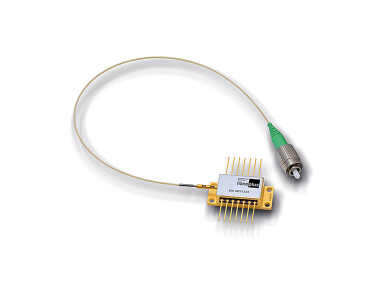Environmental Laboratory
Managing resources based on intelligent cameras
Jul 13 2021
Whether in equipment, plant and mechanical engineering, medical technology, agriculture or logistics - image processing solutions are used in a wide variety of industries and scenarios to accelerate, control and optimise processes. When artificial intelligence comes into play, the range of applications becomes even wider. Systems such as IDS NXT ocean, that have integrated computing power, artificial intelligence and are also characterised by a compact, cost-efficient design are becoming the most sensible solution even outside of classic industrial applications. The application possibilities based on such cameras are almost limitless. To make the most of this technology, companies need knowledge about the capabilities of the current technological state of the art on the one hand, and vision systems that are equally flexible, easy to use and powerful on the other.
Where rule-based machine vision has not been attempted or has reached its limits, there is a high potential for deep learning algorithms to support employees and drive forward automation. AI solutions usually require specialist knowledge, development effort, and investment in computing and data storage hardware. With the rise of cloud-based computing and dedicated training services, however, deep learning becomes more and more accessible. Lowering this threshold is the main focus of the new all-in-one AI vision system IDS NXT ocean. It requires neither special knowledge in deep learning nor camera programming in order to create and execute individual neural networks. Camera hardware, software, infrastructure and support come from a single company. Users only need to provide sample images and knowledge on how to evaluate them (e.g. "good" / "bad"). This makes the start into AI-based image processing particularly quick, easy and user-friendly. For more information, please click here.
Train and execute individual neural networks
Thanks to the IDS NXT lighthouse training software, even non-experts without prior knowledge of artificial intelligence or camera programming can train an AI classifier with their own image data. It only requires three essential steps: to upload training images, to label these images and to train the desired net. Access is easy: users simply need to call up the web application, log in – and are able to start training a neural network right away. Instead of first having to set up an individual development environment, they have immediate access to all functions as well as the required infrastructure. The generated network can then be executed directly on the IDS NXT industrial cameras, turning them into powerful inference cameras with industrial-proof interfaces such as REST and OPC UA.
Managing resources smart and sustainable
The application possibilities based in intelligent cameras such as IDS NXT are limitless. They can help to detect contaminants of various materials in waste disposal and management, for example, which optimises waste handling. The timely detection of unwanted material can also prevent damage to recycling machines. But there is even more – to get more information and learn about application examples, please click here.
Digital Edition
AET 28.4 Oct/Nov 2024
November 2024
Gas Detection - Go from lagging to leading: why investment in gas detection makes sense Air Monitoring - Swirl and vortex meters will aid green hydrogen production - Beyond the Stack: Emi...
View all digital editions
Events
Nov 26 2024 Paris, France
Nov 27 2024 Istanbul, Turkey
H2O Accadueo International Water Exhibition
Nov 27 2024 Bari, Italy
Biogas Convention & Trade Fair 2024
Nov 27 2024 Hanover, Germany
Dec 02 2024 London, UK














.jpg)






